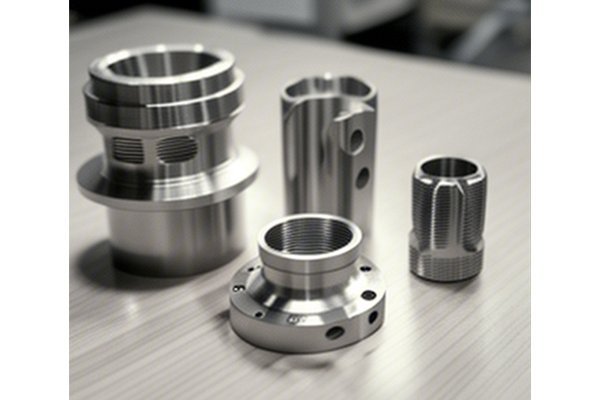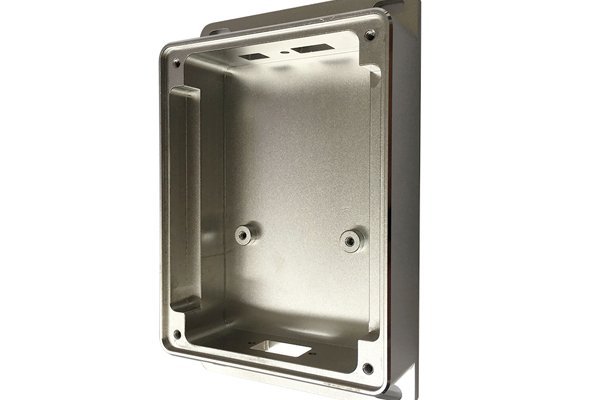Did you know that aluminum is the second most popular metal in the world for manufacturing, following iron and steel? Every day, industries around the globe rely on this versatile material for everything from consumer goods to aerospace components. In fact, the global aluminum market was valued at over $150 billion in 2020 and is projected to continue growing as industries focus on lightweight and durable materials. So, what role does CNC machining play in this burgeoning landscape?
In this in-depth blog post, we will explore the multifaceted advantages of CNC machining for high-precision aluminum parts, detailing how this technology not only streamlines production but also significantly enhances quality, accuracy, and efficiency. Whether you’re a manufacturer looking to optimize production processes or a business contemplating the shift to CNC machining, this guide will provide you with valuable insights.
—
What is CNC Machining?
Computer Numerical Control (CNC) machining is a technology that utilizes computer software to control machinery tools. It automates the manufacturing process, significantly reducing the amount of manual intervention required. This precision engineering technique allows for the intricate shaping of materials, resulting in high-quality finished products that can meet stringent engineering standards.
Brief History of CNC Technology
The concept of CNC machining dates back to the 1940s when the first numerical control machines were developed to automate manufacturing. Over the decades, technology has evolved remarkably, transitioning from mechanical punch cards to advanced computer systems capable of managing complex machining operations.
Why Choose Aluminum?
Aluminum’s popularity can be attributed to its many advantages, such as being lightweight, resistant to corrosion, and possessing excellent thermal conductivity. Manufacturers often prefer aluminum when weight reduction is crucial, such as in the aerospace or automotive industries.
Key Properties of Aluminum
What is Precision Machining?
Precision machining refers to the manufacturing process of creating very accurate dimensions in parts and components. This precision is critical in industries where safety and reliability are paramount.

Consequences of Inaccurate Parts
Inaccurate machining can lead to a host of issues, including increased manufacturing costs, safety hazards, and compromised product performance. CNC machining addresses these challenges through its ability to consistently produce parts within tight tolerances.
Increased Precision and Accuracy
One of the standout benefits of CNC machining is its precision. Modern CNC machines can achieve tolerances as tight as ±0.001 inches, ensuring that even the most intricate designs can be executed flawlessly.
Scalability and Consistency
CNC machining allows for mass production of identical parts without compromising on quality. Once a machine is programmed, it can run batch after batch, delivering consistency that manual processes cannot match.
Cost-Effectiveness
Considerably less labor is involved with CNC machining, which reduces operational costs. Furthermore, the efficiency and reduced error rates mean that companies can save money in the long run.
Flexibility and Versatility
CNC machines can be programmed to work with various materials, including different grades of aluminum and other metals. This adaptability means that manufacturers can pivot to produce different products as market demands change.
Enhanced Safety and Reduced Labor Costs
By minimizing direct human involvement, CNC machining offers a safer working environment. Employees can focus on monitoring the machines and ensuring quality control rather than engaging in risky manual operations.
CNC Milling
CNC milling uses rotating cutting tools to remove material from a workpiece. This process is suitable for creating complex shapes, slots, and holes in aluminum parts.
CNC Turning
CNC turning involves rotating the workpiece against a stationary cutting tool. It excels in producing cylindrical components, such as shafts or bushings, that require high precision.
CNC Drilling
CNC drilling uses tool bits to create holes in aluminum pieces. This process can be enhanced with a variety of tooling options tailored for different hole sizes and depths.
CNC Waterjet Cutting
Waterjet cutting uses high-pressure water to cut through aluminum. This method is especially useful for intricate designs that require precision without any heat-affected zones.
CNC Laser Cutting
Laser cutting is another CNC method that utilizes a high-powered laser beam to cut materials. This process is ideal for producing clean edges and complex patterns on aluminum parts.
Aerospace Industry
In an industry where every gram matters, CNC machined aluminum parts offer the lightweight yet robust solutions that aerospace manufacturers seek. Components such as brackets, housing, and structural parts are routinely machined to exact specifications.
Automotive Industry
CNC machining plays a critical role in the automotive sector. Vehicle manufacturers require high-quality aluminum parts for engine components, frames, and body panels to enhance the overall performance and efficiency of cars.
Electronics Industry
Electronics rely heavily on aluminum for casings and heat sinks because of its excellent conductivity. CNC machined parts provide the precision needed for electronic assemblies.
Medical Devices
CNC machining allows for highly precise medical parts at a low cost, with applications ranging from surgical instruments to prosthetics.
Consumer Goods
From lightweight laptop frames to kitchen appliances, many consumer goods incorporate high-precision aluminum parts, showcasing the versatility of CNC machining.
Aerospace: Lightweight Brackets
A leading aerospace manufacturer utilized CNC machining to produce lightweight brackets that contributed to a significant reduction in overall aircraft weight without compromising structural integrity.
Automotive: Engine Components
An automotive company improved its production process for engine components by switching to CNC machining, allowing for more precise fittings and enhanced fuel efficiency.
Medical: Surgical Instrumentation
A medical device manufacturer scaled its production of surgical instruments using CNC machining, which ensured compliance with strict regulatory standards while increasing throughput.
Material Management
Choosing the right aluminum alloy is crucial for achieving desired characteristics. Manufacturers must carefully select materials suitable for their applications.
Tool Wear and Maintenance
CNC tools can wear out over time, leading to possible inaccuracies. Regular maintenance and timely replacement can mitigate these issues.
Complexity of Design
While CNC machining is highly versatile, complex designs could lead to increased production times. Proper planning and design optimization can help overcome possible production bottlenecks.
Advancements in Technology
The advent of Industry 4.0 brings innovations like additive manufacturing, the Internet of Things (IoT), and integrated automation, which will further enhance CNC machining’s capabilities in aluminum parts manufacturing.
Integration with Industry 4.0
As factories become increasingly automated and interconnected, CNC machining will evolve, allowing for smarter operations, data-driven decisions, and improved production timelines.
In summary, the benefits of CNC machining for high-precision aluminum parts are vast and multidimensional. By employing CNC technology, manufacturers can achieve greater precision, scalability, and cost-effectiveness while ensuring the safety of their operations.
As industries continue to seek lightweight and durable materials for their products, the relevance of CNC machining remains important. It not only addresses the challenges of traditional manufacturing methods but also positions businesses for success in a rapidly changing market landscape.
This blog highlights the essential techniques and advantages of CNC machining, emphasizing the necessity for manufacturers to adapt to modern manufacturing practices. Whether you’re in aerospace, automotive, electronics, or consumer goods, understanding the value of CNC machining is crucial as industries strive for improved efficiency and quality.
Remember, investing in CNC machining technology is not just a choice; it’s a strategic move toward becoming a leader in your industry!






